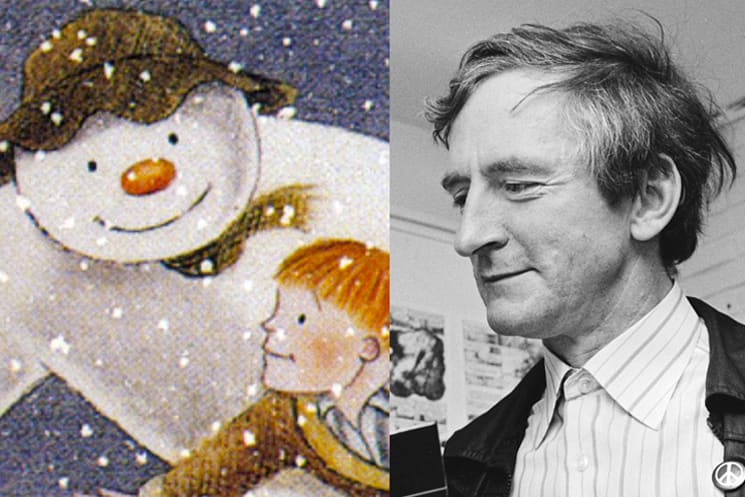Raymond Briggs — the English illustrator, cartoonist, graphic novelist and author known best as the creator behind The Snowman — has died. Briggs' family said he died Tuesday (August 9), thanking staff at Royal Sussex County Hospital (via the Associated Press) in southern England "for their kind and thoughtful care of Raymond in his final weeks." A cause of death was not revealed. He was 88.
"We know that Raymond's books were loved by and touched millions of people around the world, who will be sad to hear this news," the family said in a statement released Wednesday through Publisher Penguin Random House.
Briggs released the wordless children's book The Snowman in 1978. The story follows a boy who builds a snowman that comes to life at the stroke of midnight, and their ensuing adventures until the sun comes up the next day. Upon waking up in the morning, the boy finds his frozen friend has melted.
"I don't have happy endings. I create what seems natural and inevitable," Briggs told Radio Times in 2012. "The snowman melts, my parents died, animals die, flowers die. Everything does. There's nothing particularly gloomy about it. It's a fact of life."
In 1982, The Snowman was adapted into a half-hour animated television film, directed by Dianne Jackson and scored by Howard Blake. Like its source material, the animated film features no dialogue, save for a performance of song "Walking in the Air" sung by chorister Peter Auty.
The Snowman's animated adaptation was nominated for Best Animated Short Film at the 55th Academy Awards, and won a BAFTA TV Award. To mark the original's 30th anniversary, a sequel titled The Snowman and the Snowdog was released in 2012.
Briggs's earlier work earned the author a fan in David Bowie, leading the music icon to film an introduction for a re-released version of the animated special. In it, Bowie frames himself as the now grown-up boy who built the titular snowman, telling viewers, "One year, I made a really big snowman. He got me this scarf," showing a garment that looks like the one featured in the animation. "You see, he was a real snowman."
The Snowman was also adapted into a stage show, while a video game was released in 1984 for early PCs like the Commodore 64, ZX Spectrum and MSX. The book has sold more than 5.5 million copies around the world.
"We know that Raymond's books were loved by and touched millions of people around the world, who will be sad to hear this news," the family said in a statement released Wednesday through Publisher Penguin Random House.
Briggs released the wordless children's book The Snowman in 1978. The story follows a boy who builds a snowman that comes to life at the stroke of midnight, and their ensuing adventures until the sun comes up the next day. Upon waking up in the morning, the boy finds his frozen friend has melted.
"I don't have happy endings. I create what seems natural and inevitable," Briggs told Radio Times in 2012. "The snowman melts, my parents died, animals die, flowers die. Everything does. There's nothing particularly gloomy about it. It's a fact of life."
In 1982, The Snowman was adapted into a half-hour animated television film, directed by Dianne Jackson and scored by Howard Blake. Like its source material, the animated film features no dialogue, save for a performance of song "Walking in the Air" sung by chorister Peter Auty.
The Snowman's animated adaptation was nominated for Best Animated Short Film at the 55th Academy Awards, and won a BAFTA TV Award. To mark the original's 30th anniversary, a sequel titled The Snowman and the Snowdog was released in 2012.
Briggs's earlier work earned the author a fan in David Bowie, leading the music icon to film an introduction for a re-released version of the animated special. In it, Bowie frames himself as the now grown-up boy who built the titular snowman, telling viewers, "One year, I made a really big snowman. He got me this scarf," showing a garment that looks like the one featured in the animation. "You see, he was a real snowman."
The Snowman was also adapted into a stage show, while a video game was released in 1984 for early PCs like the Commodore 64, ZX Spectrum and MSX. The book has sold more than 5.5 million copies around the world.
